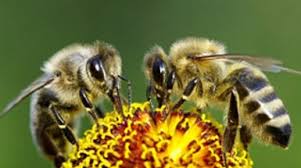
记忆可以篡改?
Animals Can Be Given False Memories
记忆可以篡改?
Two studies, one with bees and one with mice, show that the brain can be manipulated into having a memory of an occurrence that did not in reality happen. Karen Hopkin reports
对蜜蜂和老鼠的两项研究发现,大脑中的记忆可以被篡改,使得实际上从未发生的事物在记忆中发生。
播音/撰文 卡伦·霍普金(Karen Hopkin)
翻译 王宁
Have you ever sworn that you left your phone in the car, only to find it in your pocket, or on your desk or, admit it, in the fridge. Or maybe you just dreamed that you left it on the dashboard and the memory was so real you had to check there first. Well, it happens to the best of us. And, if you believe the latest research, it can happen to animals, too.
你曾经遇到过这样的事情吗?非常肯定自己的手机放在了车里,但最后却在口袋里,或者在桌子上甚至冰箱里找到了它。也许你只是梦见自己把它放在了仪表盘上,但是梦境是如此的真实以至于你不得不首先检查那里。这样的事谁都有过,然而你相信动物也会发生这样的事情吗?
Okay, critters don’t misplace their electronic devices. But researchers are finding that memory can be as tricky for some beasties as it is for us. Take, for example, bees. These flying foragers are renowned for their ability to remember which flowers are best and where to find them. But it turns out bees can be bollixed.
当然,动物不会把他们的电子设施放错地方,但是研究人员发现一些小动物的记忆有时也会像人类的一样“调皮”。比如蜜蜂这一飞翔的觅食者,它们因为可以记信哪里的花最好并且如何找到它们而闻名,但是研究发现它们也会开小差。
Scientists trained bumblebees to expect a droplet of sugar water from two artificial flowers: one that was solid yellow, the other looking like an archery target of black and white rings. A few minutes later, the insects were allowed to choose between those two flowers and a third one that had yellow rings, a combo of the previous patterns. In this short-term test, the bees correctly showed a preference for the petals they’d seen had the sweet stuff.
科学家训练大黄蜂分辨两朵不同的假花上是否有滴糖水,一朵是纯黄,另一朵是像箭靶一样黑白相间的环,几分钟后,大黄蜂需要在这两种花以及第三种结合前两者的有黄色环的花之间做出选择。在这项短期小测中,蜜蜂正确地选择出了之前有蜜糖的花朵。
But when challenged a few days later, the bees got bamboozled. They began selecting the yellow-ringed flower, even though it had never given them anything. It was like their memories had merged—or so conclude the authors in their paper in the journal Current Biology.[Kathryn L. Hunt and Lars Chittka, Merging of Long-Term Memories in an Insect]
但几天后再次测试,蜜蜂也开始迷糊了,他们开始选择黄色环的花,即使它并没有为蜜蜂提供任何好处。这似乎表明它们的记忆发生了融合,一篇发表在《现代生物学》(Current Biology)期刊上的文章如是说。
Meanwhile, another team of researchers found they could manipulate the memories of mice while the animals slept. As rodents skitter from here to there, what are called “place cells” in their brains record their pathways and locations. These cells then replay these movements during sleep, helping the animals remember where they’ve been.
与此同时,另一个研究小组宣称他们可以在老鼠睡梦中操纵它们的记忆,当啮齿类动物四处乱跑时,一种在大脑中名为“方位细胞”的细胞记录着他们的行踪,这些细胞会在睡梦中“重映”这些行为,帮助动物记住它们做过些什么。
In this study, researchers used electrodes to turn on cells in the sleeping animals’ pleasure center at the same time as certain place cells lit up. This simultaneous sleepy time stimulation essentially forged an artificial memory, linking a particular location with good feelings. So when the mice woke up, they spent more time in the happy place of their dreams than anywhere else—even though nothing special actually happened there. This research is in the journal Nature Neuroscience. [Gaetan de Lavilléon et al, Explicit memory creation during sleep demonstrates a causal role of placecells in navigation]
在这项研究中,研究人员用电极唤醒了处于睡眠中动物的愉快中枢细胞,与此同时方位细胞也被激活,这两种在睡眠中同时发生的刺激,会催生出一段人造记忆,将某种愉悦感觉与一些特定方位所连接。因此当老鼠醒来时,他们会在它们梦中的“伊甸园”待更多时间,即使那里并没有真正发生任何特殊的事情。这个研究发表在了《自然神经科学》(Nature Neuroscience)上。
Both studies suggest that we all may need to take our memories with a grain of salt. Or a dollop of nectar. Or a nice piece of cheese.
两项研究说明,我们或许都应该将我们的记忆与一粒盐、一滴蜜糖或者一片美味的奶酪想结合。
未经书面许可任何人不得复制或镜像
京ICP备11000850号-1
 京公网安备11010502039775号
京公网安备11010502039775号 信息网络传播视听节目许可证0111611号
国家科技基础条件平台

















